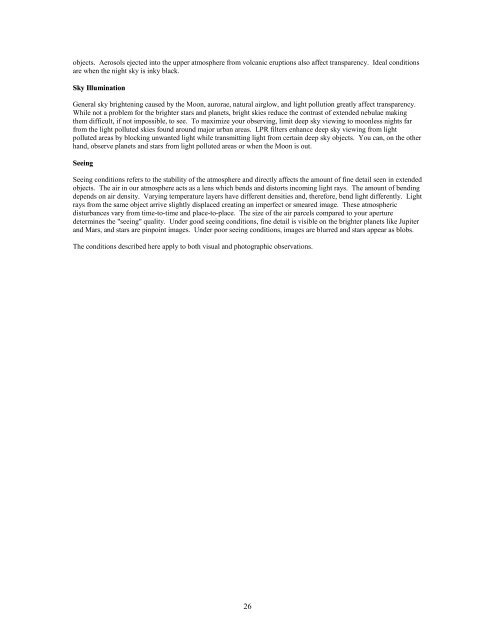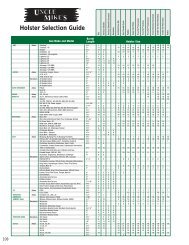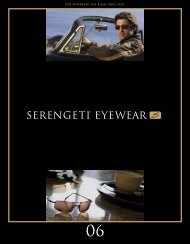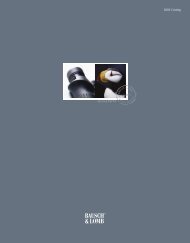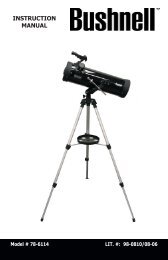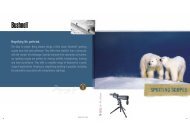INSTRUCTION MANUAL NexStar 80GTL - Celestron
INSTRUCTION MANUAL NexStar 80GTL - Celestron
INSTRUCTION MANUAL NexStar 80GTL - Celestron
Create successful ePaper yourself
Turn your PDF publications into a flip-book with our unique Google optimized e-Paper software.
objects. Aerosols ejected into the upper atmosphere from volcanic eruptions also affect transparency. Ideal conditions<br />
are when the night sky is inky black.<br />
Sky Illumination<br />
General sky brightening caused by the Moon, aurorae, natural airglow, and light pollution greatly affect transparency.<br />
While not a problem for the brighter stars and planets, bright skies reduce the contrast of extended nebulae making<br />
them difficult, if not impossible, to see. To maximize your observing, limit deep sky viewing to moonless nights far<br />
from the light polluted skies found around major urban areas. LPR filters enhance deep sky viewing from light<br />
polluted areas by blocking unwanted light while transmitting light from certain deep sky objects. You can, on the other<br />
hand, observe planets and stars from light polluted areas or when the Moon is out.<br />
Seeing<br />
Seeing conditions refers to the stability of the atmosphere and directly affects the amount of fine detail seen in extended<br />
objects. The air in our atmosphere acts as a lens which bends and distorts incoming light rays. The amount of bending<br />
depends on air density. Varying temperature layers have different densities and, therefore, bend light differently. Light<br />
rays from the same object arrive slightly displaced creating an imperfect or smeared image. These atmospheric<br />
disturbances vary from time-to-time and place-to-place. The size of the air parcels compared to your aperture<br />
determines the "seeing" quality. Under good seeing conditions, fine detail is visible on the brighter planets like Jupiter<br />
and Mars, and stars are pinpoint images. Under poor seeing conditions, images are blurred and stars appear as blobs.<br />
The conditions described here apply to both visual and photographic observations.<br />
26


